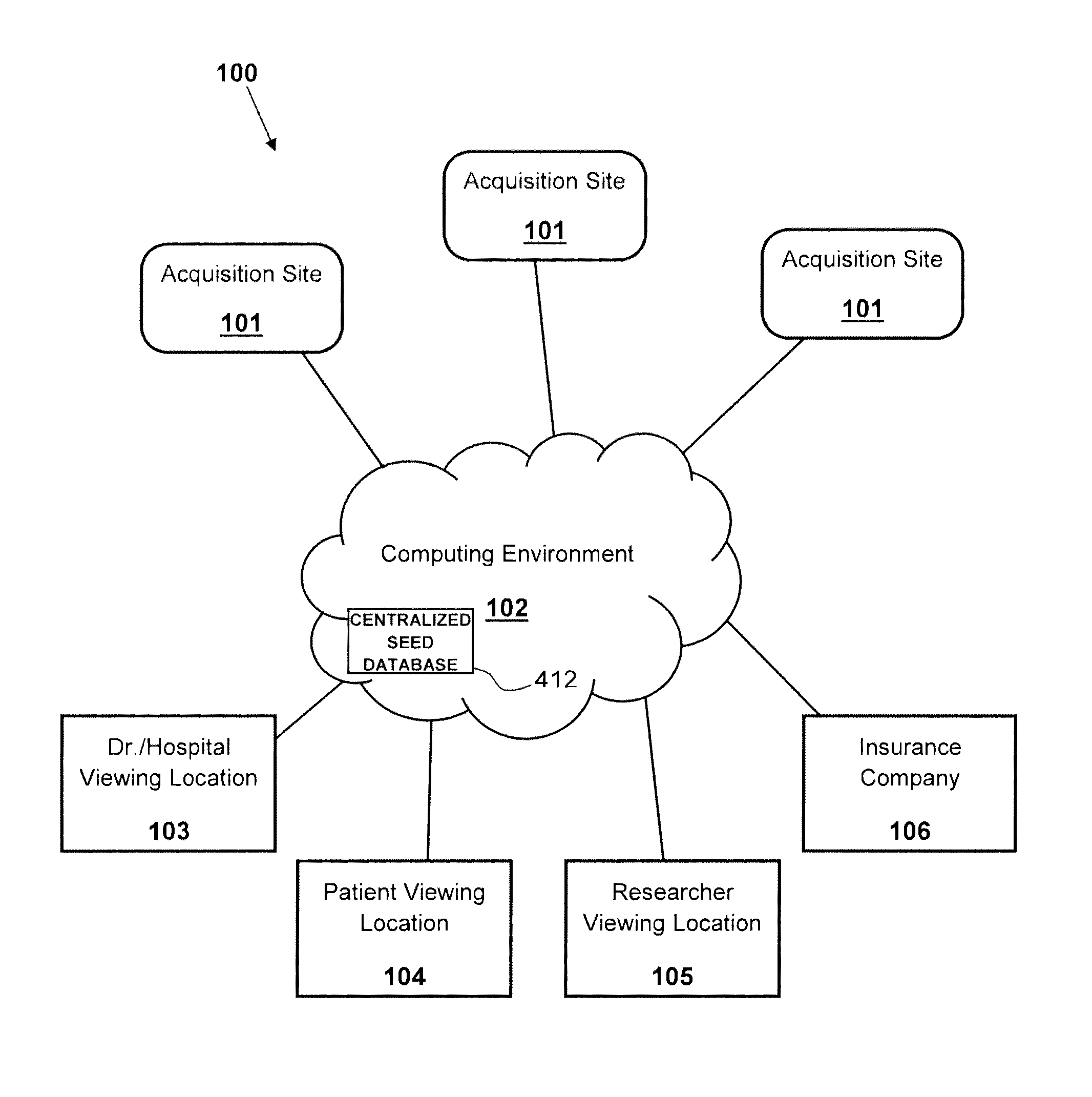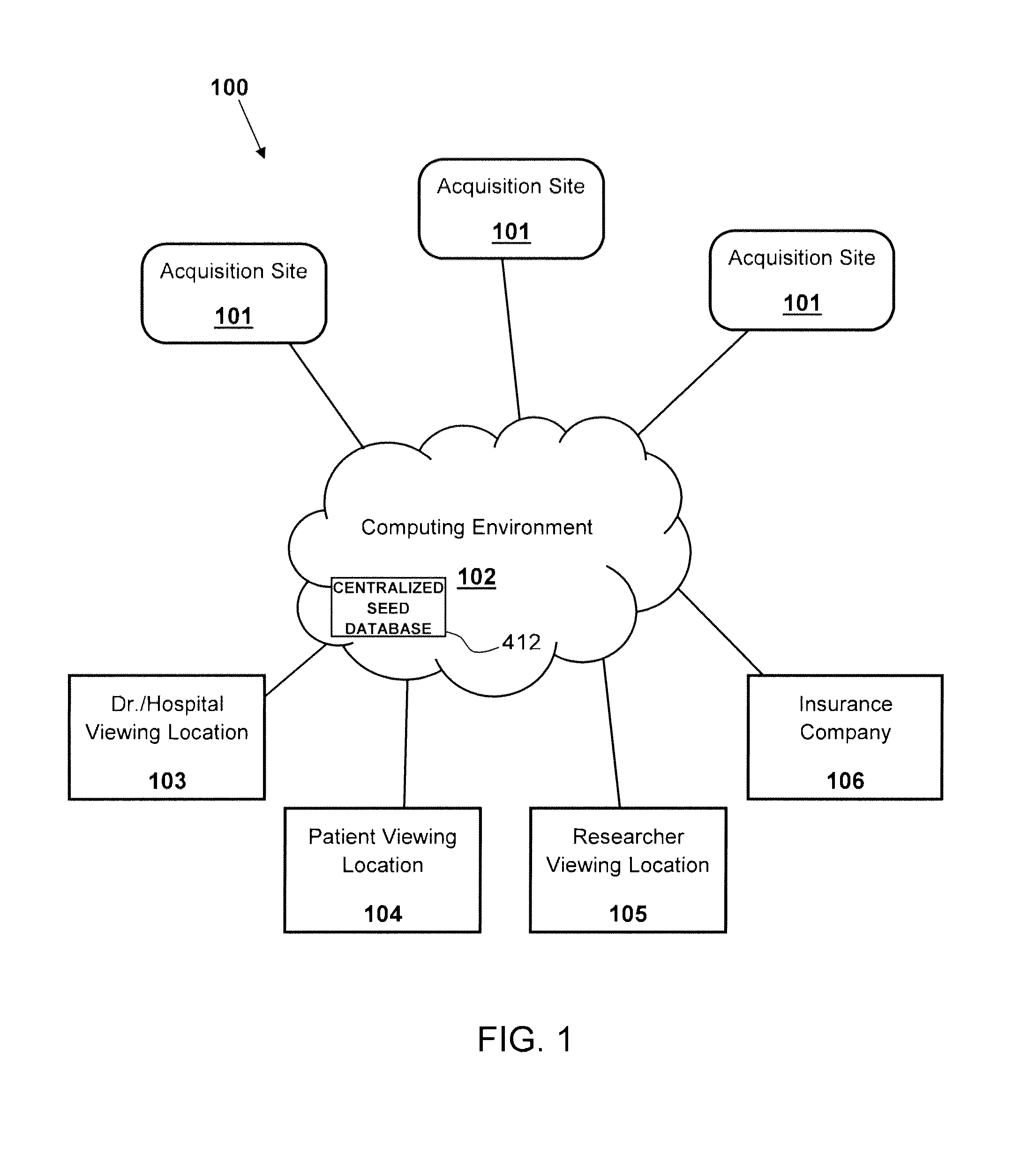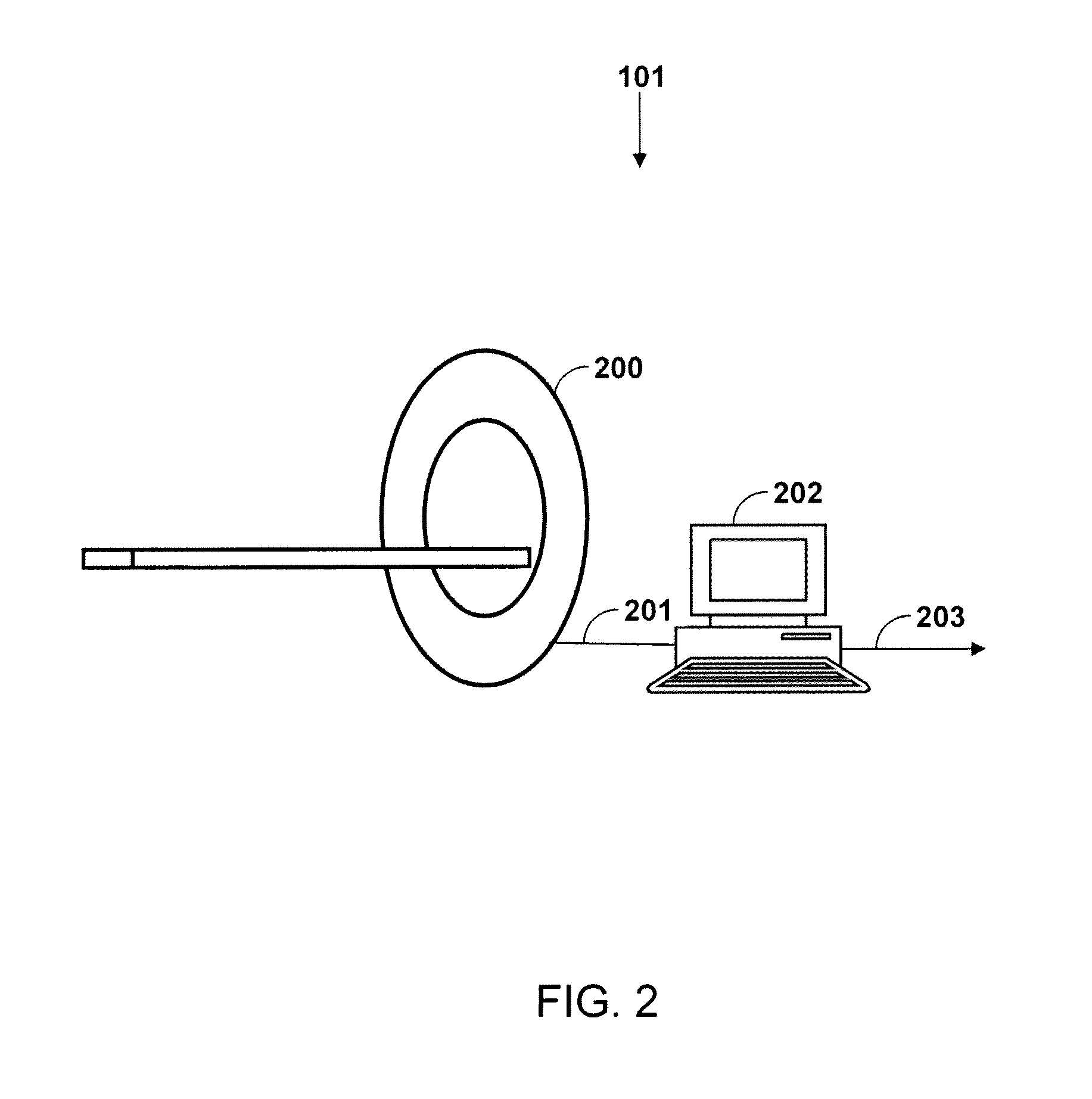Distributed microwave image processing system and method
a microwave image and processing system technology, applied in the field of image processing, can solve the problems of requiring specialized computing techniques, hardware and infrastructure that are not readily available, and the overall solution of mwi (microwave imaging) is a computationally heavy and expensive endeavor, and achieves the effects of reducing the processing burden of image reconstruction, reducing the cost of image reconstruction, and reducing the processing burden of image data acquisition site and image viewing location
- Summary
- Abstract
- Description
- Claims
- Application Information
AI Technical Summary
Benefits of technology
Problems solved by technology
Method used
Image
Examples
Embodiment Construction
[0034]FIG. 1 shows an overview of the present distributed microwave image processing system 100. The present system 100 allows for removal of the computationally expensive task of image reconstruction from an image acquisition site 101, and from viewing locations (103-106). Image reconstruction is handled by a computing environment 102 that is specifically configured to quickly reconstruct microwave images. The present system 100 takes full advantage of the regular benefits of cloud computing, such as ease of access. However, there are also other advantages to cloud computing that are specific for microwave image (MWI) processing. These include:
[0035]Use of a centralized database of prior raw data from many acquisition sites and calculated images allows for the selection of a better “seed” (a better starting point for the iterative reconstruction calculation) which substantially reduces computation time.
[0036]MWI processing can be cost affordable because specialized and non-standard...
PUM
 Login to View More
Login to View More Abstract
Description
Claims
Application Information
 Login to View More
Login to View More - R&D
- Intellectual Property
- Life Sciences
- Materials
- Tech Scout
- Unparalleled Data Quality
- Higher Quality Content
- 60% Fewer Hallucinations
Browse by: Latest US Patents, China's latest patents, Technical Efficacy Thesaurus, Application Domain, Technology Topic, Popular Technical Reports.
© 2025 PatSnap. All rights reserved.Legal|Privacy policy|Modern Slavery Act Transparency Statement|Sitemap|About US| Contact US: help@patsnap.com



